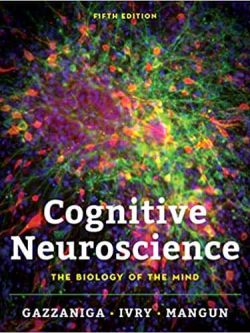Specifications
| book-author | Cleveland P. Hickman (Jr.) ; Susan L. Keen ; David J. Eisenhour ; Allan Larson ; Helen I'Anson |
|---|---|
| file-type | |
| isbn10 | 1264091214 |
| isbn13 | 9781264091218 |
| language | English |
| publisher | McGraw-Hill Higher Education |
Book Description
“Integrated Principles of Zoology, 19th Edition” by Cleveland P. Hickman Jr., Susan L. Keen, David J. Eisenhour, Allan Larson, and Helen I'Anson provides a comprehensive overview of the principles of zoology, covering the diversity, structure, function, evolution, and ecology of animals. Here's an outline of the key topics covered in this edition:
- Introduction to Zoology: The book begins with an introduction to the field of zoology, discussing its history, scope, and relevance in understanding the diversity of animal life. It covers the scientific method, classification of organisms, and basic principles of animal biology.
- Evolution and Diversity of Animals: This section explores the evolutionary history and diversity of animals, covering topics such as phylogenetics, classification systems, major animal phyla, and the origin and diversification of animal life on Earth.
- Animal Form and Function: The book delves into the structure and function of animal bodies, covering topics such as tissues, organs, organ systems, homeostasis, nutrition, digestion, circulation, respiration, excretion, locomotion, and reproduction.
- Animal Behavior: This section discusses animal behavior, including topics such as ethology, behavioral ecology, communication, social behavior, mating systems, parental care, foraging behavior, and the adaptive significance of behavior.
- Ecology and Conservation Biology: The book explores the ecological principles governing animal populations, communities, and ecosystems. It covers topics such as population dynamics, community interactions, ecosystem structure and function, conservation biology, and human impacts on biodiversity.
- Animal Physiology: This section examines the physiological mechanisms underlying animal life, covering topics such as neural and hormonal regulation, sensory systems, muscle and movement, immune function, thermoregulation, and metabolic processes.
- Animal Development: The book discusses the process of animal development, including topics such as fertilization, embryonic development, morphogenesis, organogenesis, growth, and regeneration.
- Animal Reproduction and Development: This section explores the reproductive strategies and developmental patterns of animals, covering topics such as reproductive anatomy and physiology, reproductive behaviors, mating systems, pregnancy, birth, and postnatal development.
- Animal Ecology: The book examines the ecological relationships between animals and their environments, covering topics such as habitat selection, niche specialization, competition, predation, parasitism, mutualism, and ecosystem dynamics.
- Animal Evolutionary Biology: This section discusses the principles of evolutionary biology as they apply to animals, covering topics such as natural selection, adaptation, speciation, phylogenetics, biogeography, and the fossil record.
“Integrated Principles of Zoology, 19th Edition” serves as an essential resource for students, educators, and researchers interested in gaining a comprehensive understanding of the principles of animal biology. With its accessible writing style, rich illustrations, and up-to-date coverage of key topics, this edition provides readers with a solid foundation in zoology and its relevance to modern biological science.









Reviews
There are no reviews yet.